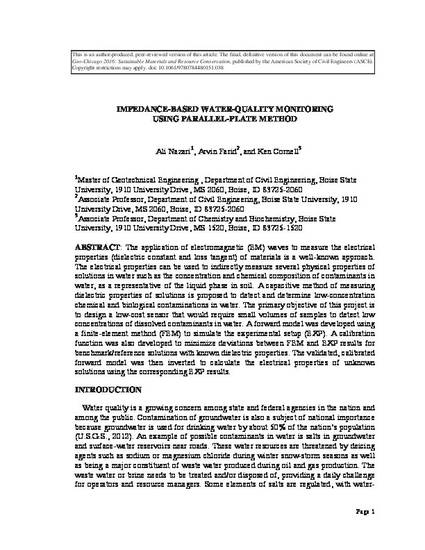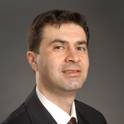
The application of electromagnetic (EM) waves to measure the electrical properties (dielectric constant and loss tangent) of materials is a well-known approach. The electrical properties can be used to indirectly measure several physical properties of solutions in water such as the concentration and chemical composition of contaminants in water, as a representative of the liquid phase in soil. A capacitive method of measuring dielectric properties of solutions is proposed to detect and determine low-concentration chemical and biological contaminations in water. The primary objective of this project is to design a low-cost sensor that would require small volumes of samples to detect low concentrations of dissolved contaminants in water. A forward model was developed using a finite-element method (FEM) to simulate the experimental setup (EXP). A calibration function was also developed to minimize deviations between FEM and EXP results for benchmark/reference solutions with known dielectric properties. The validated, calibrated forward model was then inverted to calculate the electrical properties of unknown solutions using the corresponding EXP results.
This is an author-produced, peer-reviewed version of this article. The final, definitive version of this document can be found online at Geo-Chicago 2016: Sustainable Materials and Resource Conservation published by the American Society of Civil Engineers (ASCE). Copyright restrictions may apply. doi: 10.1061/9780784480151.038
Available at: http://works.bepress.com/arvin_farid/21/
